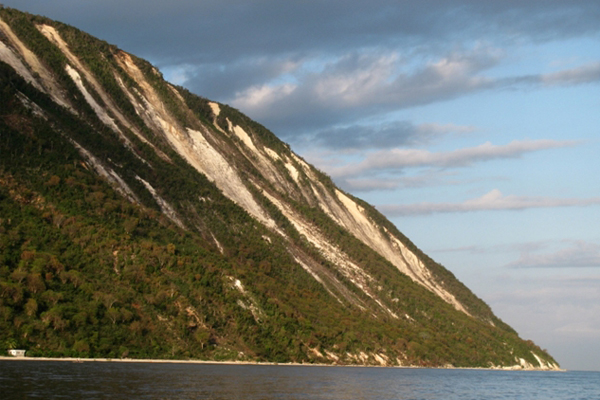Sediment Deposits Unlock Haiti’s Earthquake History

This Research in Action article was provided to LiveScience in partnership with the National Science Foundation.
Perched on the edge of an active fault zone, Haiti's Tapion Ridge is a visual reminder of earthquakes past. The bare patches on its steep, forested slopes are the scars of landslides caused by the destructive magnitude-7.0 quake that struck the country in 2010. But was that earthquake the first of its kind?
Like California's San Andreas Fault, the tectonic plates (massive, interlocking pieces of earth) in Haiti's fault zone grind past one another in opposite directions, causing periodic quakes as they go. Major quakes of this kind typically occur about every 250 years. But during the 2010 quake, the plates did something different: In addition to the usual sideways grinding, they also pushed towards each other in a thrusting motion.
The violence of the plate motions triggered massive landslides on the slopes of the Tapion Ridge and in other coastal areas. These landslides spilled into the sea, depositing a thick, distinctive layer of sediment on the ocean floor.
Within weeks of the quake, a team of scientists supported by the National Science Foundation's Rapid Response Research grant program sailed to Haiti aboard the R/V Endeavor to investigate. Led by Cecilia McHugh — a researcher at Columbia University's Lamont Doherty Earth Observatory and a professor at Queens College, CUNY — the team searched for underwater clues to help understand the quake, collecting cores (long, vertical tubes of sediment) from the seafloor.
Deep in the cores, the team found a 2000-year-old deposit almost identical to the one left on the seafloor by the landslides in the 2010 quake. The remarkable similarity between the two deposits indicates that an earthquake as violent as the 2010 event — possibly involving the same unusual thrusting motion — may have hit Haiti 2000 years ago, causing similarly massive landslides. The long time gap between this 2000-year-old quake and the 2010 event suggests that both quakes were caused by a rarer kind of tectonic plate motion than the region typically experiences.
This discovery is helping scientists to better understand Haiti's complex history of powerful earthquakes, and may provide clues as to what the future holds. In the meantime, the Tapion Ridge continues to loom above the fault boundary, awaiting the next big quake.
Sign up for the Live Science daily newsletter now
Get the world’s most fascinating discoveries delivered straight to your inbox.
Editor's Note: Any opinions, findings, and conclusions or recommendations expressed in this material are those of the author and do not necessarily reflect the views of the National Science Foundation. See the Research in Action archive.










